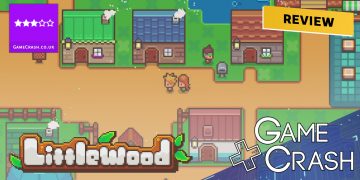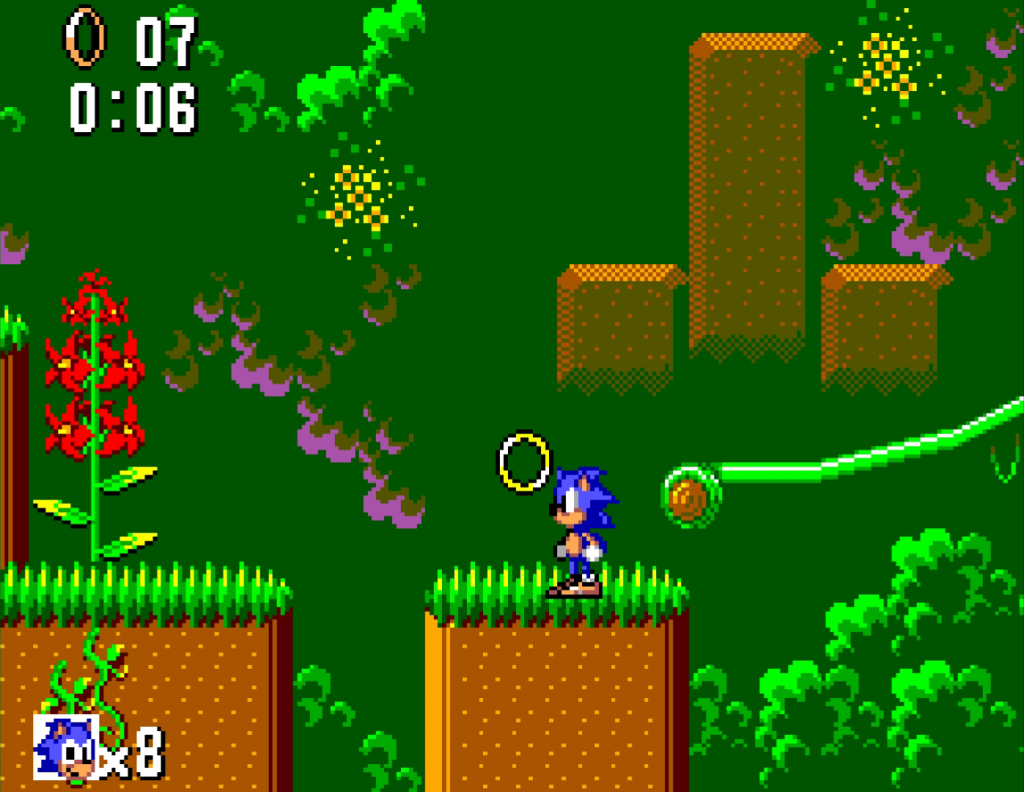As mentioned last time, my introduction to the world of video games comes courtesy of one classic console and the three games that came with it. The Master System may not have been anywhere near as successful as the NES was, but it will always be much more special to me.
Likewise, there’s forever a special place in my heart for those very first games. The Lucky Dime Caper, we’ve already covered. Line of Fire was much less my kind of game but is favourably seared into my brain all the same. But, neither holds a candle to the game I played first of absolutely everything else – because I didn’t even have to plug a cartridge in to play it – Sonic the Hedgehog.
What is it?
While the original Sonic game launched on the Mega Drive in 1991, owners of SEGA’s older machine were far from left out. Despite sharing the same, simple name, the Master System version is remarkably different in practically every regard.

Only three levels feature across both versions of the game – Green Hill Zone, Labyrinth Zone and Scrap Brain Zone – but the levels themselves are so different as to share little else but the overall theme.
In place of the rest of the Mega Drive version’s levels are Bridge Zone, Jungle Zone and Sky Base Zone. Meanwhile, the Mega Drive version’s special zone is replaced entirely with a handful of pinball-inspired courses. Bouncing Sonic along to the goal in time while also collecting as many rings, extra lives and continues as you could. There were no Chaos Emeralds in these special zones to collect because in this game, they’re hidden within the levels themselves.
The action in the game is pretty close to the original’s. The levels are somewhat more simple, given the limitations of the hardware, but Sonic moves largely in the way you’d expect him to and the basic platforming, running and jumping on enemies are all comfortably familiar.
Two levels in the game – in what is pretty unique to this game within the Sonic series – are auto-scrolling levels. The first, the second act of the Bridge Zone, sees you navigating from left to right while having to keep to the pace of the moving screen. In a Sonic game, this actually counter-intuitively slows you down somewhat. The real challenge in this level ends up coming from timing the tricky platforming just right as well as surviving long, collapsing bridges when you can’t just bomb right past.

The Jungle Zone’s auto-scrolling level instead sees Sonic climbing through the undergrowth to the tree tops. Navigating waterfalls and vines in time before the screen takes your platforms away. This is somewhat more suited to Sonic’s pace and overall just works better than the Bridge Zone’s at adding challenge without making it unfair.
The music in the game is also mostly original and stands out in no small part thanks to the man behind both the game’s audio and, in fact, the entire development of the game: Yuzo Koshiro.
Having already worked on the sound for a lot of SEGA’s biggest releases by this point, including The Revenge of Shinobi and ActRaiser, Koshiro’s name would soon become synonymous with Streets of Rage and its groundbreaking soundtrack.
Koshiro had formed his own development company, Ancient, specifically to create this 8-bit version of Sonic the Hedgehog. He and a small team mostly comprising of family members worked alongside SEGA to make what was ultimately an incredibly ambitious project. While their first game was their only foray into making Sonic titles, Koshiro and Ancient would go onto develop games like Streets of Rage 2 and Beyond Oasis and they’re still going today with a couple of RPG projects for the Switch.
Should you play it?
Yes.

Ok, as you might guess I’m a somewhat biased source for this one. But, either way, this is an absolute must play for any Sonic fan. It carries enough flavour of the original Mega Drive version to be familiar, but is more than different enough to provide plenty of unique experiences.
While the game is considerably simpler than its 16-bit counterpart, there’s still a decent level of challenge here. You might blast through the entire thing in an hour or two, but as I can personally attest to, having replayed this game literally hundreds of times, that’s not really a problem.
Can you play it?
As the Master System was quite unsuccessful in America, it’s actually relatively difficult to still play this game legally today. The Wii’s Virtual Console having been the only re-release the Master System version has ever received.

The GameGear version, meanwhile, fares somewhat better. Sonic Adventure DX on the Gamecube included it alongside several other GameGear Sonic games as an unlockable bonus. Sonic Mega Collection Plus on the original Xbox and Playstation 2 also featured it, again as an unlockable and most recently it was released on the 3DS’ virtual console in 2013.
The GameGear version is mostly the same, but the reduced screen size does slightly hamper how comfortable some of the fast action platforming can be. It also makes it somewhat harder to come back to and play on a large television screen.
As a Master System cartridge, the game goes for between about £5-£15 on eBay. But if you want to enjoy this game the way 5 year old me did, the best option has to be the Master System II with Sonic the Hedgehog built-in.










































